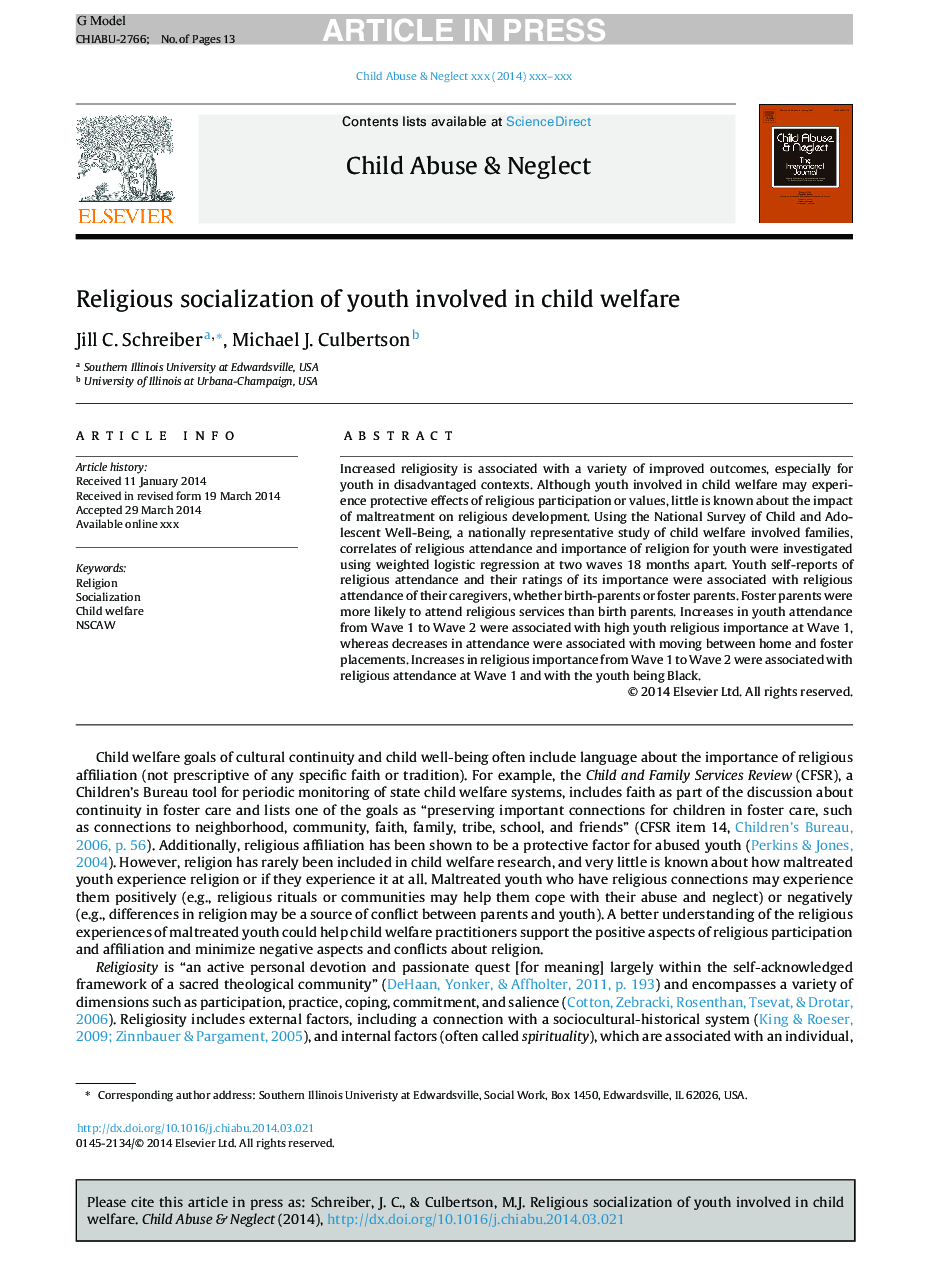| Article ID | Journal | Published Year | Pages | File Type |
|---|---|---|---|---|
| 10310709 | Child Abuse & Neglect | 2014 | 13 Pages |
Abstract
Increased religiosity is associated with a variety of improved outcomes, especially for youth in disadvantaged contexts. Although youth involved in child welfare may experience protective effects of religious participation or values, little is known about the impact of maltreatment on religious development. Using the National Survey of Child and Adolescent Well-Being, a nationally representative study of child welfare involved families, correlates of religious attendance and importance of religion for youth were investigated using weighted logistic regression at two waves 18 months apart. Youth self-reports of religious attendance and their ratings of its importance were associated with religious attendance of their caregivers, whether birth-parents or foster parents. Foster parents were more likely to attend religious services than birth parents. Increases in youth attendance from Wave 1 to Wave 2 were associated with high youth religious importance at Wave 1, whereas decreases in attendance were associated with moving between home and foster placements. Increases in religious importance from Wave 1 to Wave 2 were associated with religious attendance at Wave 1 and with the youth being Black.
Related Topics
Health Sciences
Medicine and Dentistry
Perinatology, Pediatrics and Child Health
Authors
Jill C. Schreiber, Michael J. Culbertson,
